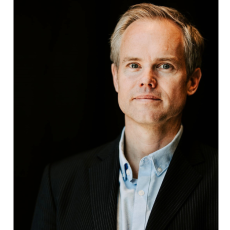On a broad level, what is your personal vision when it comes to the role that corporations play in tackling climate change?
I have had a varied career and different opportunities to express my skills, and by working on sustainability with a large company like Visa, I saw the opportunity of all the relationships that this company manages through numerous payment rails. Our goal is to provide products and services that can raise the level of awareness and engage both customers and businesses in the change that needs to happen. The opportunity for the consumer to have sustainable choices is critical, and while the idea of sustainability in business did not exist five years ago, it is now becoming commonplace. Sustainability is no longer viewed by companies as a future cost, but as a potential revenue opportunity to change their business for the good of the planet.
You conducted a survey whereby 46% of respondents said they were less likely to purchase from a company that did not have sustainability targets. What would these results mean for Visa's business?
Eighteen months ago, when I started working with Visa, I noticed that designing a consumer value proposition entails a better understanding of customer needs. It was clear that customers wanted to express their shopping values differently, but it was not agreed upon if it was the governments' or the companies' responsibility to fulfill this wish, nor what role banks could play in this new arrangement. Sustainability cuts across everything, and we need all parts of the system to work together to support such contextual shift.

Transaction data can be very illuminating in this sense as it shows consumers' habits: it allows us to use it as a guideline to provide more sustainable options. The ongoing digitization of money brings even more opportunity to grasp these concepts, particularly in Europe, where online and in-store experience is blended together due to mobile apps.
Partly because of regulations, businesses are trying to attract these sustainable customers as well. However, as our survey did not show 100% agreement on the sustainability topic, it is important that banks and businesses are able to segment which part of their portfolio needs to meet that demand, the Visa Sustainability Index aiming to support precisely this endeavor.
What does the establishment of the Sustainable Solutions Team of Visa in early 2022 entail for the company?
The Sustainable Solutions Team is a unit meant to work alongside all our businesses. This initiative was built on a fifteen-year-long history of Visa having a corporate sustainability officer working to make our company more sustainable. As a service company, we do not have a huge footprint, but we had yet to build anything with our own climate tech services that we will be able to deliver to our clients.
What do you believe are the most pressing matters that you need to focus on to improve your own operations when it comes to sustainability?
As part of our Scope 3 emissions, travel is one of the most prominent liabilities at the moment. To handle that, we promote sustainable aviation fuels as part of the Eco Alliance, alongside with trying to do more train travel across Europe. In addition, our buildings and data centers are running on renewable energy and we are on a path to net zero, with science based targets.
Given your umbrella vision, which industries would you qualify as leaders in sustainability and which as lagging behind?
All industries seem to be moving at the speed that technology allows them. Over the last 40 years, we gained the ability to get stuff into our homes very easily, but getting them out is not a frictionless process. As a result, we seek ways to fix this disruption within industries, and we believe that enabling consumers with the information they would like to have on sustainable restaurants, for example, will spur those businesses to move faster into adopting green measures. Food and clothing are two of the most eager industries to make the transition, while cement or air travel are sitting on higher emissions, which are more difficult to abate.
How many people around the world are, in one way or another, impacted by Visa?
There are over four billion Visa credentials and 65,000 transactions per second take place on our system globally. This wide reach helps us increasingly connect the dots regarding the provenance of the products customers buy, allowing them to understand the full ark of everything they purchase - from the till back to the farm. In this exciting future that relies on digitization, collaboration is a key element, so almost everything that we achieved over the last year and a half was made possible because of our partnerships.
What are you priorities for the coming years?
We see demand for sustainability practices across all the five regions where we operate, so there are incredible opportunities ahead. We plan to help our merchant side to swiftly change their business; and in order to accelerate the shift, we need to help connect all those businesses so that they can reach consumers on the other side. Our goal is not to create a separate Visa sustainability solution, but create the sustainability solution that delivers on the values that Visa is already committed to.






